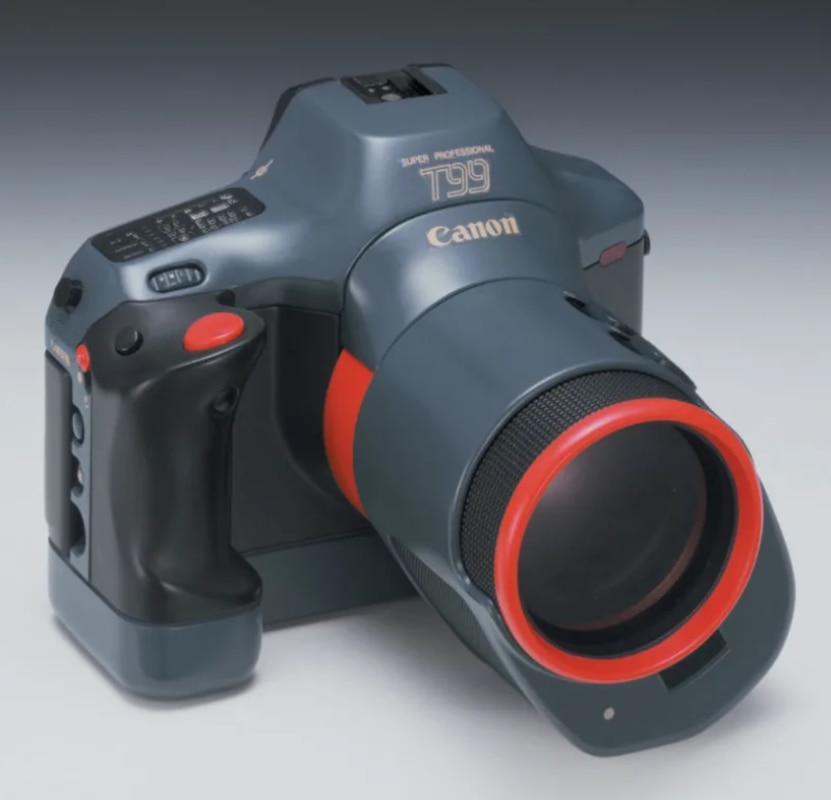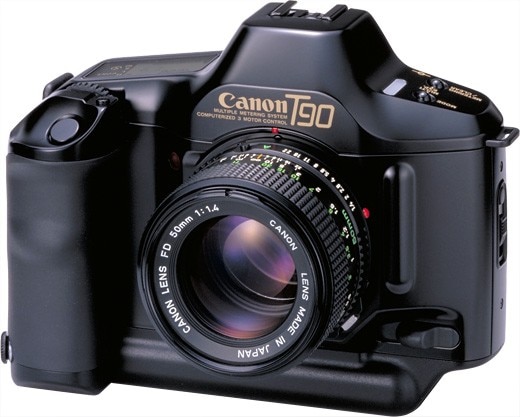Only a few products have been truly revolutionary. One of them is the Canon T90: this camera was designed more than thirty years ago, in 1986, but it seems to have been launched only a few months ago. The credit goes entirely to Luigi Colani, the industrial designer who sadly passed away in September 2019 and whose biodynamic design has transformed the world of photography forever. Before the T90, the most common cameras were sharp-edged and shrunk-wrap around the internal mechanicals: if you take a quick look at the Canon A-1 or even at the older T70, you can see that they looked just like little boxes with a camera lens.
The introduction of digital controls, computer-aided design and CNC machines gave the designer the opportunity to dare. “It took two years of me telling them [ Canon] that a camera is something between the human hand and the human eye, so it had to have ergonomics on both sides!”, told Colani in 2009 to Interview magazine. First, he worked on the materials: instead of metal and plastic, Colani chose polycarbonate, which made it possible to obtain new sinuous and ergonomic shapes. The right handgrip was no longer flat, thus allowing the photographer to have a firm grip in every situation. The plasticity of the materials and the introduction of new technologies allowed Colani to insert a small LCD screen showing the main indications on the top of the camera's right hand side. The T90 was a machine that served the human, and not the other way around: you could use it with your eyes closed and with one hand, and it is no wonder that all the professional photographers, especially photojournalists and those who shot pictures in difficult situations, fell in love with it since the very beginning. Due to its ruggedness, they nicknamed it “The Tank”.

The smooth curves of this 35mm reflex camera reveal Colani's personality. The final version of the T90 is sinuous and ergonomic, but in its original version, the curves designed by Colani are so frenetic as to recall a manta doing flips. The curves were too excessive, so they were softened in the prototype. Thirty years later, we still find many of the T99 prototype features in the Canon EOS models, and in many of the competitors' products as well.
Colani's creative energy also inspired him to retouch the lens, which had always been considered as something untouchable, and whose shape had always been the same since the beginning of photography. In Colani's vision, however, the lens was no longer barrel-shaped, but it had gained an attachment that went diagonally from the lens to the base, allowing the left hand to hold the camera more firmly, as if the photographer were grasping a rifle. This feature wasn't however implemented in the T90 and in the other interchangeable lens machines. However, it can be found in bridge cameras, the hybrid cameras that had characterized the world of photography between the 80s and the first decade of 2000.


